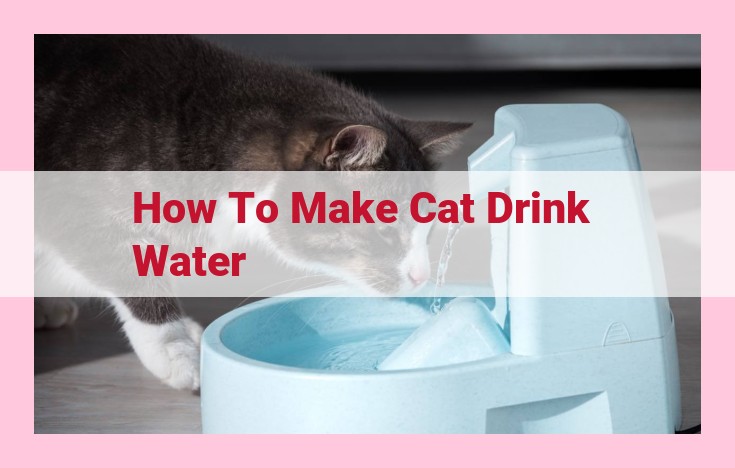Essential Water Sources And Techniques To Keep Your Feline Hydrated: A Comprehensive Guide

To encourage cats to drink water, ensure they have multiple accessible water sources, such as bowls and fountains. Add flavor enhancers like wet food, treats, or coconut water to water. Consider behavioral factors like anxiety and boredom that may contribute to dehydration and try calming techniques like providing a quiet space, hiding treats, or introducing interactive toys.
Factors Influencing Cat Hydration
The Role of Health Professionals and Animal Experts
Veterinarians, animal nutritionists, and animal behaviourists play a crucial role in ensuring adequate cat hydration. They possess in-depth knowledge about feline physiology, medical conditions, and behavioural patterns that can impact hydration. By providing expert advice and guidance, these professionals help cat owners understand the importance of hydration, recognize potential issues, and implement effective hydration strategies.
Medical Conditions and Medications
Certain medical conditions can affect a cat’s ability to stay hydrated. Kidney disease, diabetes, and some types of cancer can lead to increased fluid loss or difficulty absorbing water. Medications for conditions such as heart failure or seizures may also have a diuretic effect, further exacerbating dehydration. Therefore, it’s crucial to consult with a veterinarian to assess any underlying medical conditions that may contribute to dehydration and adjust medication accordingly.
Learned Behavior, Anxiety, and Boredom
Cats are creatures of habit, and their hydration patterns can be influenced by learned behaviour. For instance, if a cat has had a negative experience with water, such as being forced to drink or having access to dirty water, it may become reluctant to drink. Additionally, anxiety and boredom can lead to decreased water intake, as cats may be too preoccupied with other activities or unable to find a safe and comfortable place to drink.
Strategies to Improve Cat Hydration
Ensuring Accessibility:
Providing cats with ample and easily accessible water sources is crucial. Place multiple water bowls around your home, especially in areas frequented by your feline friends. Choose bowls made of materials that cats find appealing, such as ceramic or stainless steel. Avoid using plastic bowls, as they can harbor bacteria that can deter cats from drinking. Consider using pet fountains that provide circulating, oxygenated water, which can be more enticing to cats.
Flavor and Nutrients:
Cats often prefer water with added flavor and nutrients. Consider adding wet food or treats to their water bowls. Bone broth is another great option, providing essential nutrients and electrolytes. Coconut water and aloe vera juice can also be beneficial, as they contain electrolytes and antioxidants. Always avoid adding milk or cream to your cat’s water, as it can cause digestive upset.
Recommendations from Experts:
Cat owners, animal welfare organizations, and pet product manufacturers have shared their effective hydration strategies. One recommendation is to place water bowls high up, mimicking the natural behavior of cats who drink from elevated water sources. Hiding water bowls in various locations can also encourage cats to explore and stay hydrated. Consider using water-infused toys or treat dispensers that encourage cats to drink while playing or working for treats.